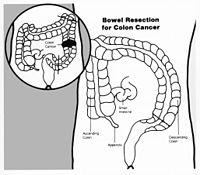
Photo from wikipedia
Anastomotic leak after esophagectomy is associated with high levels of morbidity and may impact negatively on oncological outcomes. The aim of this single centre study was to describe our experience… Click to show full abstract
Anastomotic leak after esophagectomy is associated with high levels of morbidity and may impact negatively on oncological outcomes. The aim of this single centre study was to describe our experience in managing these complications From 2007–2017 data was reviewed retrospectively from our prospectively maintained electronic database. All patients underwent either 2 or 3 phase esophagectomy for cancer of the oesophagus or esophago-gastric junction. All histological sub-types and stage of cancer were included in the analysis. Anastomotic leaks were classified according to the Esophagectomy Complications Consensus Group (ECCG) guidelines; type I—conservative management, type II—non-surgical intervention, type III—surgical intervention. 224 esophagectomies were included in our analysis (104 (46%) minimally invasive, 120 (54%) open approach). The incidence of all anastomotic leaks was 10% (23/224). Surgical approach did not influence the incidence of anastomotic leak (minimally invasive 10 (43%), open approach 13(57%), P = 0.76). Five patients (22%) had a type I leak, 9 patients (39%) type II and 9 (39%) had a type III leak. There was an increase in the number of leaks managed non-surgically over the last 5 years compared to those in the first five years of our dataset (2012–2017: 11/23 (48%) vs 2007–2012: 4/23 (17%) P = 0.08). The median time for leak diagnosis was 8 days. Most leaks were diagnosed with oral contrast CT 19 (83%). Median hospital stay after anastomotic leak was 58.5 days. Type III leaks were associated with an increased length of stay (median 84 days) compared to type I&II leaks (median (38.5 days) (P = 0.002 95% CI 18.19- 74.41). There was no significant difference in 30-day mortality between type I&II (0 patients) and type III leaks (1 patient) P = 0.260. Low mortality rates with anastomotic leak can be achieved. In centres with experienced radiological and endoscopic skills, most anastomotic leaks can be managed non-surgically. All authors have declared no conflicts of interest.
Journal Title: Diseases of the Esophagus
Year Published: 2018
Link to full text (if available)
Share on Social Media: Sign Up to like & get
recommendations!